The main nutrients perform diverse functions in the body. Proteins, or proteins, which means “first” in Greek, serve as the basis for brain, heart and muscle tissues and participate in physiological processes. You need to know which foods contain a lot of protein in order to provide the body with these essential substances.
Material Content:
The value of protein for the human body
This nutrition component is considered the most valuable, as it supplies monomers to the body to create its own proteins - amino acids. The composition of proteins found 22 such compounds.
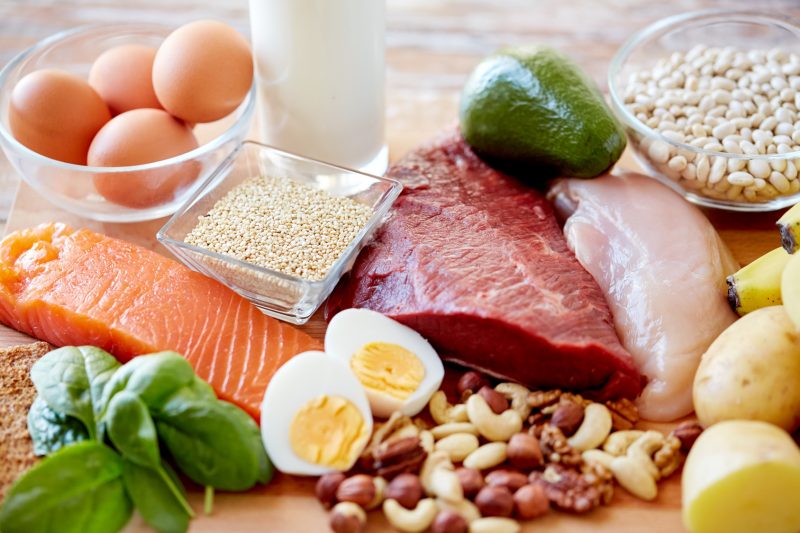
The value of proteins for the body:
- serve as building material;
- participate in most biochemical processes;
- make up to 20% of the mass of the heart, liver and muscles, 10% of the brain;
- are an essential part of enzymes or biocatalysts, hormones and antibodies;
- important for maintaining physical and mental health;
- bind some toxic substances.
Foods that contain protein are broken down into free amino acids in the intestines. They are used by the body to build its own protein molecules, are converted into other compounds. Valine, isoleucine, leucine (collectively referred to as BCAAs), lysine, methionine, threonine, tryptophan and phenylalanine must come with food.
With a lack of essential amino acids, the growth and development of the body is delayed, the performance of many functions is disrupted.
In addition to the listed 8 amino acids, arginine and histidine are conditionally indispensable for children. They are created by the cells of the body in insufficient quantities.
Protein deficiency in food
More often than not, vegans and supporters of plant diets face this problem. If a person does not consume enough products containing protein, then a lack of amino acids leads to impaired blood formation, metabolism of fats and vitamins. There is a slowdown in the growth and mental development of the child.

Protein deficiency can be recognized by the following symptoms:
- difficulty concentrating;
- susceptibility to infection;
- hair loss;
- sleep disturbances;
- dry skin.
A low-protein diet is accompanied by hypo- and vitamin deficiencies, iron deficiency anemia, and a lack of zinc in the body. Disorders of the functions of the intestines and thyroid gland develop, hormonal imbalance develops.
Excess protein
Excess amino acids in food negatively affect the body.
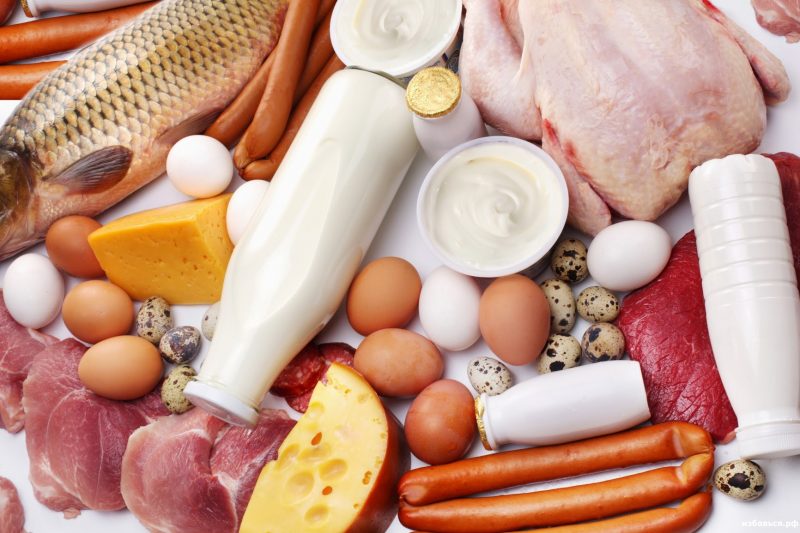
- Violations of a number of metabolic processes occur.
- Salts of uric acid accumulate in the joints, the risk of developing gout, urolithiasis increases.
- The liver, kidneys and nervous system are overloaded, especially in young children and the elderly.
- “Extra” amino acids after various biochemical transformations are partially used for the synthesis of fats.
Protein in food should be optimized in quantity and composition. The needs of people of different sex, age, physique are different. Dietary proteins are also uneven in quality. The closest to the ideal in the composition of the essential amino acids are animal products that have not undergone heat treatment.
The protein intake per day
The optimal is not the predominance of one component in the diet, but the correct combination with other nutrients. Consuming high protein foods is important for athletes, people with active lifestyles. With liver disease and kidney failure, less protein is needed.
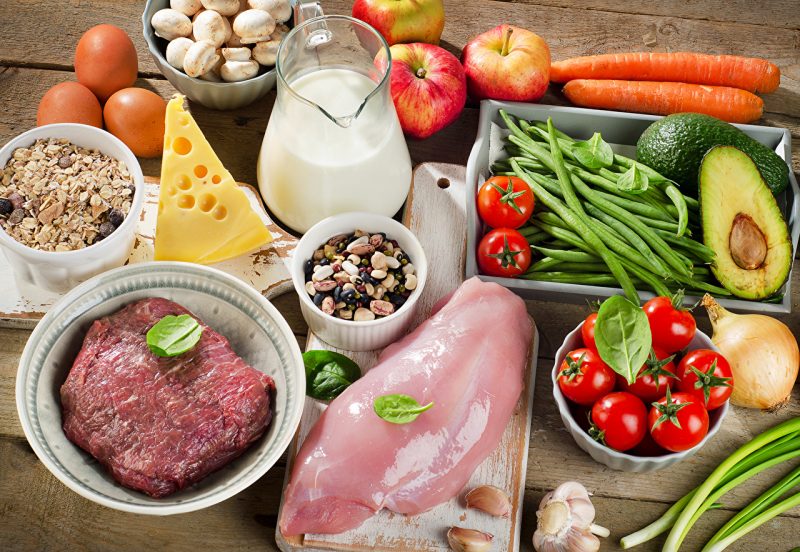
Recommendations for daily protein intake per 1 kg of body weight:
- the average norm for adults is 1–1.5 g (about 85 g per day);
- with normal weight, physical activity, strength training - from 1.8 to 3.3 g;
- at normal weight, low physical activity - from 1.2 g to 1.8 g;
- with excess weight, obesity - from 1.2 g to 1.5 g;
- during pregnancy - from 1.7 g to 1.8 g.
When choosing products, it should be borne in mind that 1 g of proteins gives the body 4 kcal, 1 g of fat - 9 kcal, 1 g of carbohydrates - 4.2 kcal. Protein in the daily diet of an adult should provide from 12 to 25% of calories.
Which foods contain a lot of protein?
Amino acids enter the body with dishes of meat, fish, with dairy and leguminous products. Lists of priority protein sources may vary from source to source. There are many reasons for the unequal composition of the same products, but there are general patterns.
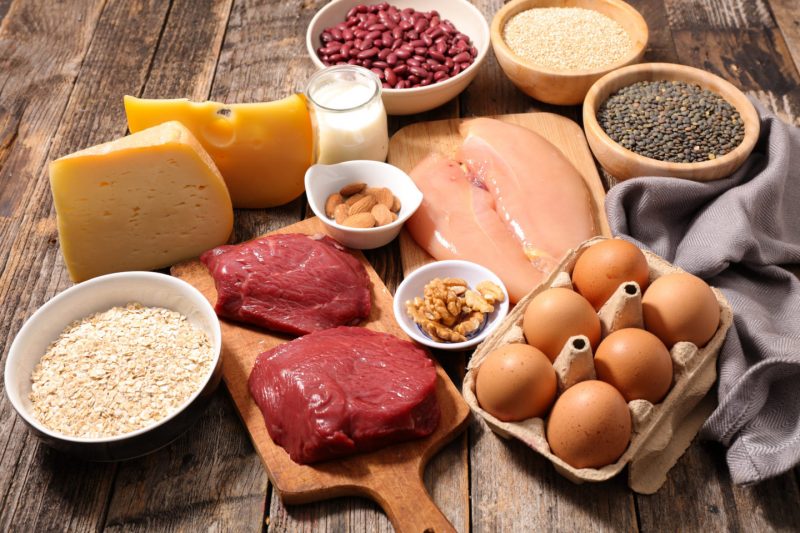
Foods rich in protein (content in g per 100 g of food):
- Dutch cheese - 26.8.
- Legumes - up to 26.
- Boiled beef - 25.8.
- Lamb chop - 25.
- Chicken Breast - 24.
- Mackerel, tuna - 22.
- Shrimp - 20.
- Salmon - 20.
- Boiled cod - 17.8.
- Fried carp - 17.
- Beef cutlet - 14.6.
- Fat cottage cheese - up to 14.
- Buckwheat groats - 13.
- Oatmeal and millet - 12.
- Chicken egg, 1 pc. (47 g) - 5.8.
- Macaroni - 11.
- Cooked sausage - 11,
- Fried Pork - 10.
- Wheat bread from flour of the 1st grade - 7.6.
- Simple rye bread - 5.5.
The main sources of animal protein for an adult are meat, eggs, and dairy products. Vegetable protein is most found in legumes, cereals, and bread. Cheese and eggs contain most of the most important nutrients in concentrated form. Protein is least in vegetables and fruits, juices - no more than 2%.
Protein Rich Animal Products
Scientists warn that the consumption of red meat and products from it increases the risk of dangerous diseases. A study on this subject was conducted by Harvard University scientist W. Willett. The professor said that avoiding meat would prevent early death.Healthy nutrition should be based on plant foods and seafood (similar to the Mediterranean diet).
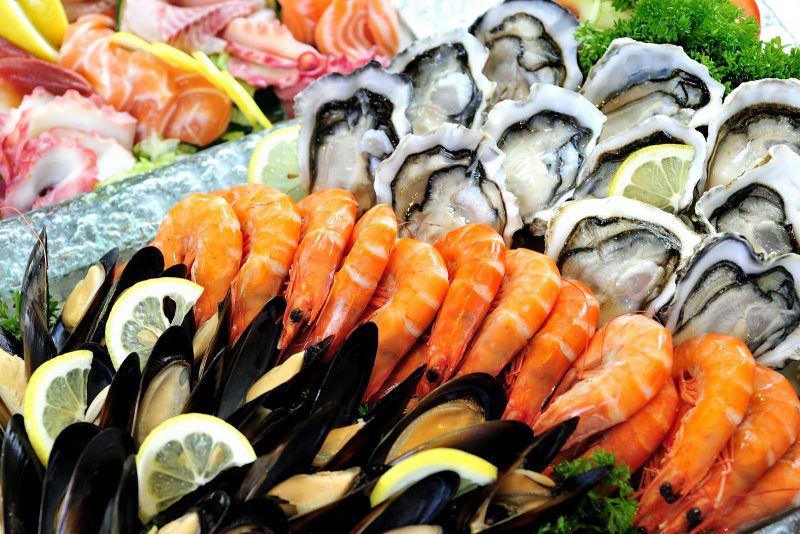
Do not completely abandon meat. White varieties are rich in essential amino acids: BCAAs, histidine, lysine, phenylalanine.
The average protein content in an egg is almost 12 g for every 100 g. Egg white contains BCAAs, methionine, phenylalanine. There are a lot of useful lipids in the yolk, there are vitamins (except C), microelements.
Protein content and calorie content of animal products (in 100 g)
| Products | The protein content, g | Calories, kcal |
|---|---|---|
| Tuna in oil | 24,0 | 195 |
| Turkey fillet | 23,0 | 110 |
| Chicken fillet | 23,0 | 99 |
| Salmon fillets | 21,5 | 199 |
| Shrimp | 23,3 | 106 |
| Zander | 20,0 | 84 |
| Pork | 22,0 | 107 |
| Beef | 21,0 | 121 |
| Gouda Cheese, 45% | 21,9 | 364 |
| Lean meat | 20,0 | 134 |
| Ham | 20,0 | 106 |
| Skinless duck breast | 19,5 | 121 |
| Cod | 18,0 | 90 |
| Chicken Leg with Skin | 17,0 | 193 |
| Chicken liver | 17,0 | 114 |
| Pollock | 17,0 | 73 |
| Squid | 16,1 | 73 |
| Chicken egg | 11,9 | 137 |
Weight loss must be combined with the consumption of low-carb, low-fat foods. At the same time, it is important to provide the body's needs for essential amino acids. Lean meat contains complete protein with a low content of fat and carbohydrates.
Vegetarians, depending on the type of diet, can use such valuable sources of protein as fish, eggs, dairy products. The fish contain BCAAs, methionine and phenylalanine. Salmon, mackerel, sardines and herring are also rich in omega-3 fatty acids. Any food of animal origin is not suitable for vegans.
Protein in dairy products
The quality of milk is usually evaluated by fat content, but the more important component is protein. Dairy products are almost all full in amino acid composition. Lysine in them contains 3 times more than in bread. A glass of milk and a loaf of bread provide the correct ratio of amino acids, although many find this food too rustic.

Protein content, g per 100 g of food product:
- various types of cheese - from 22 to 32;
- cottage cheese - from 14 to 18;
- yogurt - up to 5;
- milk - from 3 to 4.
Skim milk is a source of protein and B vitamins. One cup (250 ml) gives the body 7.3 g of protein. When boiling milk, up to 2% of this valuable component is lost, part of the vitamins is destroyed. 250 ml of fatty kefir contains 7 g of protein. Kefir and yogurt are absorbed by the body 3 times faster than milk.
Protein cottage cheese provides the body with arginine, valine, lysine, phenylalanine and tryptophan. During heat treatment, 5 to 7% of protein is lost. Dairy products are rich in calcium, which is necessary for bones, but poor in iron.
High Protein Grains
Whole grains of rye, barley, oats, rice and cereals from them supply the body with leucine, isoleucine, valine, histidine. Quinoa pseudo-grain culture is valued in a healthy diet due to its increased lysine concentration.
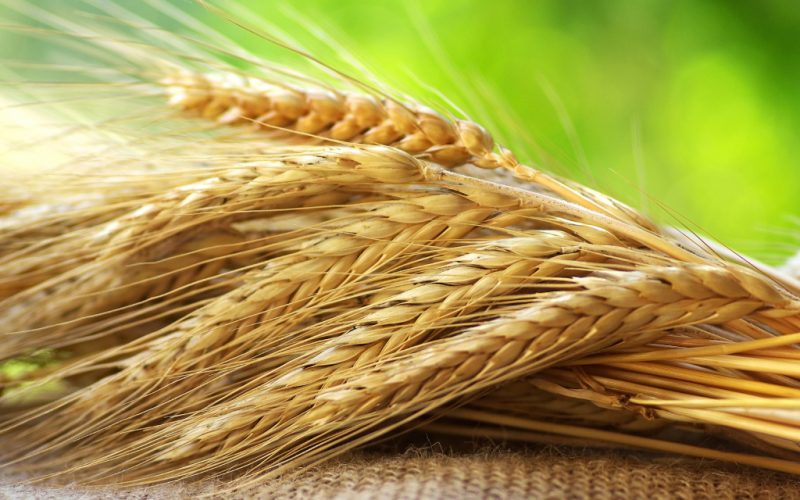
The amount of protein, g per 100 g of product:
- buckwheat - 9–13;
- quinoa - 14–15;
- amaranth - 13–16;
- oatmeal - 13;
- millet - 11;
- rice - 7.
Beans and nuts are famous for their high protein content. The grains contain amino acids phenylalanine, leucine, valine, tryptophan, methionine, threonine.
The protein content and caloric content of legumes (per 100 g of product)
| Products | The protein content, g | Calories, kcal |
|---|---|---|
| Red lentils (before cooking) | 26,0 | 337 |
| Almond | 24,0 | 611 |
| Chickpeas (before cooking) | 17,8 | 325 |
| Pistachios | 17,6 | 608 |
| Walnuts | 14,4 | 716 |
| Hazelnut | 12,0 | 644 |
“Protein champions” are red lentils, soybeans, white beans, chickpeas. Thermal cooking reduces the connection with carbohydrates of vegetable proteins, so they are easier and more fully absorbed by the body. At the same time, prolonged heating and high temperatures lead to the loss of the biological value of the products.
Protein-rich vegetables and fruits
Fiber in plant foods slows down the absorption of all food components. The amount of protein in vegetables and fruits is less, the amino acid composition is poorer, compared with meat, fish and milk. By combining products, you can provide the body with enough protein.
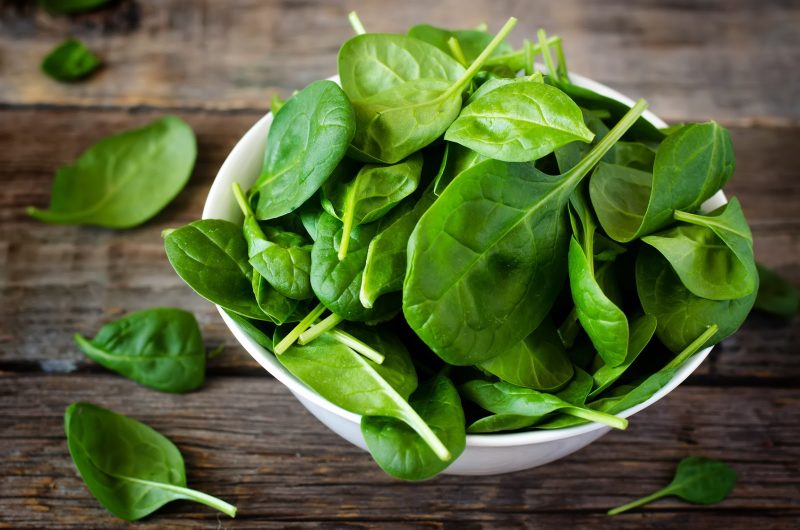
Protein content, g per 100 g of food:
- spinach - 3;
- broccoli - 3;
- tomato juice, 1 cup (250 ml) - 2.5;
- cauliflower - 2;
- potatoes - 2;
- zucchini - 2;
- tomato - 1;
- carrots - 1;
- eggplant -1;
- banana - 1.
The body receives not only carbohydrates, proteins and fats with plant foods. Vegetables and fruits contain vitamins, antioxidants, essential fatty acids, fiber, and trace elements. The use of plant and animal food in a ratio of 50:50, for example, a combination of meat with buckwheat, is considered optimal.
The quality of protein sources
All essential amino acids are found in meat, fish, milk, yogurt. The lack of animal proteins generates an increased content of sulfur atoms. Such compounds create an acidic environment in the body. The body compensates for the decrease in pH due to alkalizing products (vegetables, fruits), and if they are not enough, then it uses calcium from the composition of the bones.

Unfortunately, in conventional supermarkets it is becoming increasingly difficult to find natural products that do not contain genetically modified objects (GMOs), preservatives, flavors and flavor enhancers. Many crops are transgenic, produced using GMOs. According to animal studies, they can alter the functioning of the immune system and increase the likelihood of developing cancer. Plant products contain nitrates and pesticides, which also have carcinogenic activity.
Those who want to be healthy, build muscle or lose weight effectively should pay attention to the composition of the food and its origin. Red meat, high-calorie, refined foods are best removed from the diet. More healthy foods are low in fat but high in protein.












